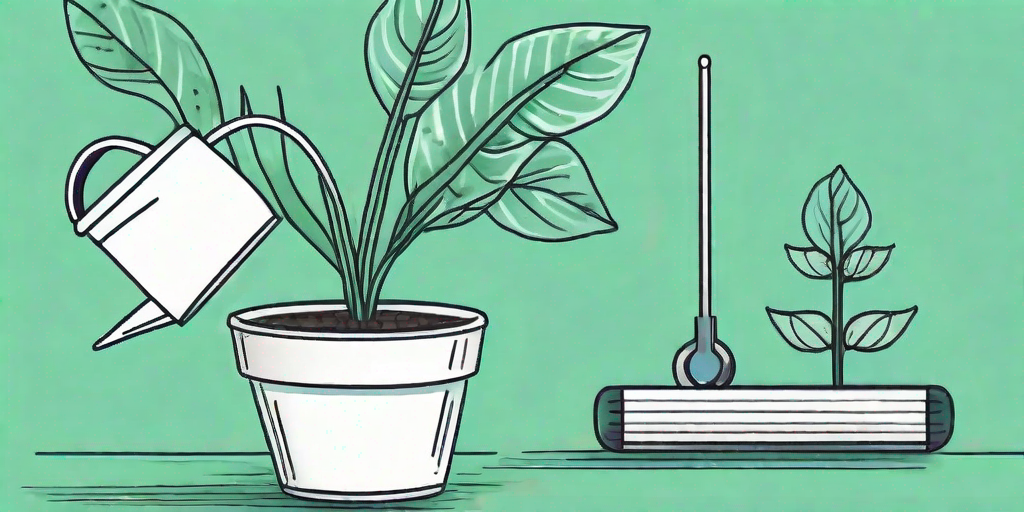
Welcome, dear reader, to the exciting world of botany, where the green thumb is mightier than the sword! Today, we're delving into the enigma of stunted plant growth. It's a tale as old as time: You've watered, you've sunned, you've even whispered sweet nothings to your leafy friends, and yet, they refuse to grow. Fear not, for we're here to unravel this botanical mystery.
The Basics of Plant Growth
Before we dive into the nitty-gritty of troubleshooting, let's take a moment to understand the basics of plant growth. After all, you wouldn't try to fix a car without knowing how it works, right? Unless you're a fan of trial and error, in which case, more power to you!
Plants, like all living things, require certain conditions to thrive. These include light, water, air, temperature, and nutrients. If any of these factors are out of balance, your plant may start to resemble a grumpy teenager: stunted, sulky, and refusing to grow.
Light
Plants are the original solar power enthusiasts. They use light in a process called photosynthesis to convert carbon dioxide and water into glucose, their food. If your plant isn't getting enough light, it's basically on a starvation diet.
On the other hand, too much light can be just as harmful. It's like trying to eat a five-course meal every hour - eventually, you're going to feel sick.
Water
Water is another crucial ingredient in the photosynthesis recipe. It also helps transport nutrients from the soil to the plant. However, overwatering is a common mistake among plant parents. It's like forcing your plant to drink eight cups of water a day, regardless of its size or needs. Not all plants are created equal!
Underwatering, while less common, can also stunt growth. It's like sending your plant on a desert trek without a water bottle. Not a fun time.
Identifying the Problem
Now that we understand the basics, let's move on to the detective work. Identifying the problem is half the battle. The other half is figuring out how to fix it, but we'll get to that later.
First, take a good look at your plant. Is it yellowing? Drooping? Does it look like it's auditioning for a role in a zombie movie? These are all signs that something is amiss.
Yellowing Leaves
Yellowing leaves can be a sign of overwatering or nutrient deficiency. It's like your plant is waving a yellow flag, begging for help.
If the yellowing is accompanied by wilting, it's likely a watering issue. If the leaves are yellow but otherwise healthy, it might be a nutrient problem.
Drooping Leaves
Drooping leaves can indicate underwatering or a lack of light. It's like your plant is doing the limbo, but without the fun party atmosphere.
If the leaves are drooping and dry, it's probably a watering issue. If they're drooping but still plump and healthy, your plant might be craving more light.
Fixing the Problem
Once you've identified the problem, it's time to roll up your sleeves and get to work. Remember, patience is key. Plants don't operate on human time, so don't expect instant results.
Here are some general tips for fixing common plant growth issues:
- Adjust your watering schedule. If you're overwatering, let the soil dry out before watering again. If you're underwatering, increase the frequency of watering.
- Move your plant to a brighter or shadier spot, depending on its needs.
- Check the temperature. Most houseplants prefer temperatures between 60 and 75 degrees Fahrenheit.
- Feed your plant a balanced fertilizer to address nutrient deficiencies.
FAQs
Why are my plant's leaves turning brown?
Brown leaves can be a sign of underwatering, over-fertilizing, or a lack of humidity. Try adjusting these factors and see if your plant perks up.
Why is my plant's growth slow even though I'm doing everything right?
Plants, like people, have their own pace. Some plants are just slow growers. As long as your plant looks healthy, there's no need to worry.
Can I use regular tap water for my plants?
Most plants are fine with tap water, but some prefer rainwater or distilled water. Check the specific needs of your plant to be sure.
Conclusion
And there you have it, folks! The mystery of stunted plant growth, solved. Remember, plant parenting is a journey, not a destination. There will be bumps along the way, but with a little patience and a lot of love, you can help your green friends thrive.
Now go forth and grow!















